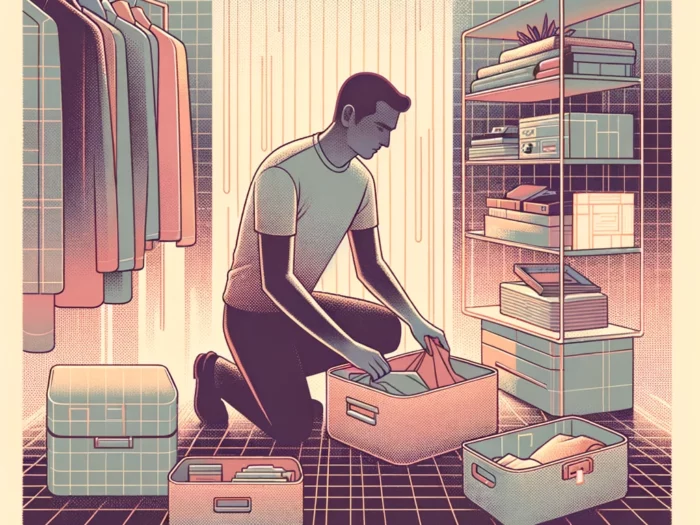
Can you tame want? Over the years, I’ve bought many things that I don’t really need. I’m sure most of you have, too. After all, many of us have been raised in an instant-gratification culture. We’re constantly bombarded with visions of shiny new toys. The media knows how to push our want buttons. Our friends show us the cool stuff they just bought. We want. Our neighbors just got a cool new car or boat. We want.
But wait! What if I told you that there are many ways to tame want. There are. Wanting is an emotional response to being unsatisfied with what you already have. Trying to satisfy yourself with more stuff is similar to a drug addiction. You get a temporary high, but after it wears off, you want more.
Before we discuss 5 ways to tame the savage beast of want, let’s compare the differences between need and want.
Need Vs. Want
Need: According to dictionary.com, a need is a requirement, necessary duty, or obligation. A need is necessity arising from circumstances of a situation or case.
Want: On the other hand, want is to wish, crave, demand, or desire.
See the difference? I may need a cup to drink water from, but I don’t need a 16-piece set of crystal glasses. I may need a car for transportation, but I don’t need a Porsche. I may need a place to sleep, but I don’t need a 5000-square-foot mansion.
Sometimes we want things we don’t really need. I’m a musician. I want more musical instruments. I’m a homeowner. I want nice stuff in my house. But I’ve learned how to curb my wants. This is not to say we should never buy things we want. Still, we should evaluate each want critically before we buy.
How To Tame The Savage Beast Of Want
- Appreciate what you already have: One reason we break down and buy more stuff is that we don’t really appreciate what we already have. When I find myself considering a new purchase, I ask myself, “Do I already have something that will fulfill the purpose?” If the answer is yes, I then ask, “Why do I need another thing to fulfill the same purpose?” Most of the time, I cannot find a valid reason. So instead of buying something new, I focus on the item I already have. This allows me to appreciate that item more.
- Weigh the costs: How much do you have to give up in order to get what you want? Of course the immediate answer is money. But it goes deeper than that. You’re also giving up time. Money only comes with time. When we spend money, we have to work harder and longer to recoup our loss. This not only steals our time, but it takes time away from our loved ones and our passions. Is the new gadget really worth it?
- Study your options: This might not work for everybody, but it often works for me. When I really want something that I don’t need, I study my options. Essentially, I go window shopping, or Internet browsing. As I study my options, I reconsider what I already have. I weigh the costs of the possible purchase. Often, I discover that there are too many choices of new products. This allows me time and space to reconsider the purchase.
- Take a walk: Exercise is magic. Not only do I use exercise to help deal with stress, I use exercise to stay on an even keel. Walking is one of my favorite forms of exercise because it’s meditative. When I walk, I often reflect on my surroundings. I also reflect on my own wants and needs. I ponder what is really important in my life. Often, I discover that the walk itself is much more important than many of the things that money can buy. Walking gives you time to consider the pros and cons of your motivations to buy. You might discover that your immediate burning desire for something decreases after a walk.
- Practice restraint: In order to tame the savage beast of want, you have to learn to say NO! Saying no is a form of discipline. Like anything else, saying no takes practice. Start by saying no to little things. Say no to an extra spoon of sugar in your coffee. Say no to another pair of shoes when you already have five pairs of shoes. When we practice restraint with little things, we learn how to say no more often.
Don’t Try Too Hard
One last piece of advice: We’re often most tempted when we resist. When we try to stop a behavior too abruptly, when we resist a desire, we’re constantly dwelling on that exact thing. That’s why so many people fail at dieting or exercise programs. We try too hard, we go for all or nothing. When we fail to reach the desired goal, we feel defeated and return to former behavior.
Beasts are not tamed quickly. It takes time. Allow yourself the room to make errors along the way. Focus on your longterm goals. I’ve found this strategy to work very well. One of my longterm goals is to minimize my belongings to the absolute essentials for my situation. This includes my basic needs, my family’s needs, my work needs, and tools for my hobbies.
Next time you want something you don’t really need, consider the 5 ways to tame the savage beast of want.












